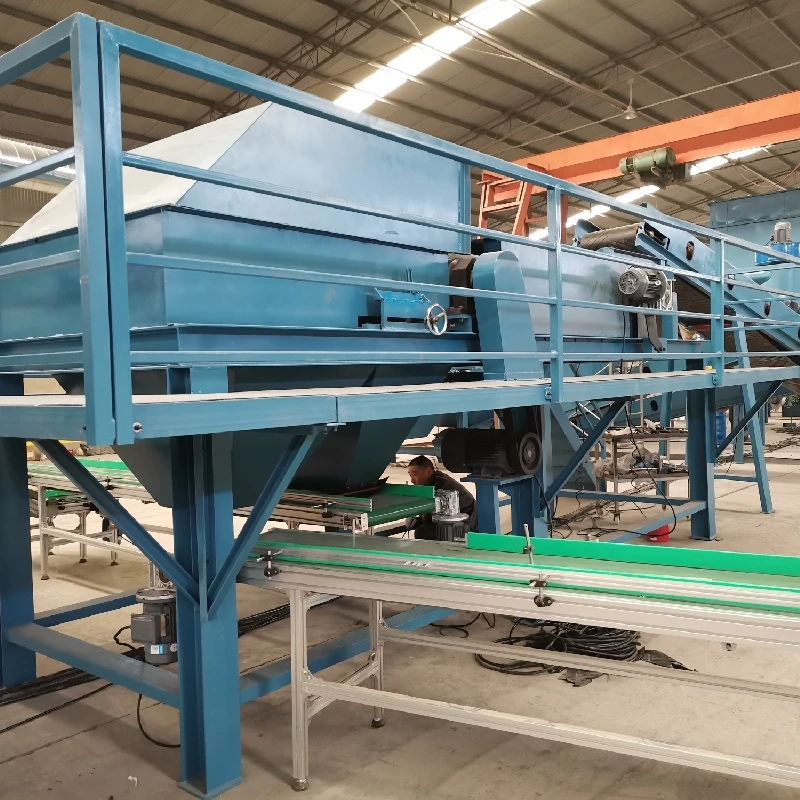

Nov . 21, 2024 10:28 Back to list
Understanding the Cost of Industrial Shredders
Industrial shredders are indispensable machines in various sectors, including recycling, waste management, and manufacturing. These powerful devices are designed to shred large quantities of material quickly and efficiently, converting it into smaller, more manageable pieces. The cost of an industrial shredder can vary widely based on several factors, and understanding these can help companies make informed purchasing decisions.
Types of Industrial Shredders
There are several types of industrial shredders, each suited for different applications. These include
1. Single-Shaft Shredders These shredders use a single rotor with sharp blades, making them ideal for processing a variety of materials, including plastic, wood, and paper. Their cost generally ranges from $10,000 to $50,000 depending on size and capacity.
2. Double-Shaft Shredders Featuring two rotating shafts, these shredders are effective in breaking down tougher materials like metals and dense plastics. Prices for double-shaft shredders typically range from $20,000 to $100,000.
3. Heavy-Duty Shredders Designed for high-volume processing, heavy-duty machines can handle large materials and volumes. These are often the most expensive, with costs starting at $50,000 and potentially exceeding $150,000 for large-scale operations.
4. Granulators While not traditional shredders, granulators are used for recycling plastic and other materials. Their price can range from $10,000 to over $70,000, depending on their capabilities and size.
Factors Affecting the Cost

1. Material Type The type of material being shredded significantly impacts the cost of the shredder. Heavy items like metals require sturdier, more robust machines, which leads to higher costs.
2. Capacity The capacity of the shredder, typically measured in tons per hour, will also affect the price. Machines that can handle larger volumes are generally more expensive.
3. Features Additional features such as noise reduction, auto-reverse capabilities, and shredding customization options can drive up costs. Investing in advanced technology often offers greater efficiency and safety but comes with a higher price tag.
4. Brand and Model Different manufacturers offer varied pricing based on brand reputation, service, and warranty. Established brands with a proven track record often command higher prices.
5. Used vs. New Purchasing used industrial shredders can be a cost-effective option, often available at 50-70% of the original price. However, buyers should be cautious and conduct a thorough inspection to avoid costly repairs later.
Total Cost of Ownership
While the initial purchase price is a vital factor, companies must also consider the total cost of ownership, which includes maintenance, operation, and energy costs. Regular maintenance is essential for prolonging the lifecycle of the shredder, so budgeting for maintenance expenses is crucial. Additionally, energy consumption can vary based on the shredder's motor size and efficiency.
Conclusion
Investing in industrial shredders requires careful consideration of various factors beyond just the purchase price. By understanding the types of shredders available and the factors influencing their cost, businesses can make strategic decisions that align with their processing needs and budget. Whether opting for a new or used shredder, it is essential to view this purchase as a long-term investment in operational efficiency and sustainability.
Latest news
Troubleshooting Common Eddy Separator Problems
NewsJul.04,2025
The Role of Metal Recycling Plants in Circular Economy
NewsJul.04,2025
The Impact of Recycling Line Pickers on Waste Management Costs
NewsJul.04,2025
Safety Features Every Metal Shredder Should Have
NewsJul.04,2025
How Industrial Shredders Improve Waste Management Systems
NewsJul.04,2025
How Cable Granulators Contribute to Sustainable Recycling
NewsJul.04,2025